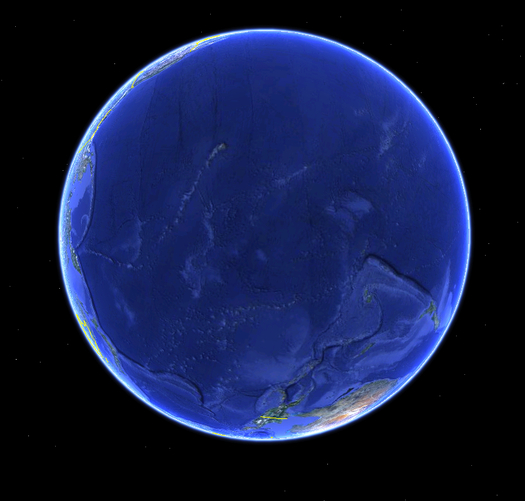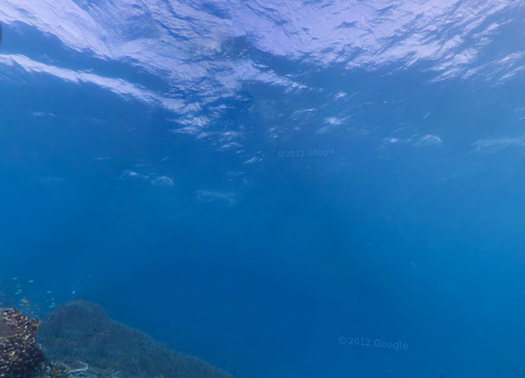
Given the opportunity to speak with little mediation about the full grandeur of Google-ness, an executive associated with that company’s Maps and Earth offerings does not hold back: "Effectively," he informs readers, "people are about 20 IQ points smarter now because of Google Search and Maps."
This out-of-thin-air data point breezes by in an exchange about the future of maps, which is understood in this context to be territory Google controls. But no worries, because what plans the company has! Already, it turns out, there’s an Android app that draws upon “a database of ‘interesting things'" to direct your attention as you stroll the world: “You might be walking down the street and it will beep and say, ‘The rowhouse one block to the left is the No. 1-rated Greek restaurant within 500 miles.’”
The benefits of such technology are clear enough: We’ve all been in unfamiliar cities, judging restaurants by their awnings, wondering whether to push another block this way or that in hopes that something more promising(-looking) emerges. I'm sure I've ended up settling for restaurants that were not "No. 1-rated," more than once.
But having made that concession, let's recall the benefits of actually looking around. The culture we live in, from streets to screens, is already overloaded with prompts and cajolery designed to direct your gaze, control your attention, and on some deeper level distract you from seeing. Not a few of these prompts are commercially driven. Thus it remains not just instructive but vital to look for, and at, the stuff that no "crowd"-driven system or proprietary algorithm or combination thereof has “rated,” sponsored, or entered into a “database of interesting things.” It is important, that is, to make the effort to look for precisely that which you are not supposed to notice.
It turns out that this Google guy offers a useful anecdote on this score. Toward the end of his interview, he describes showing his father some beautiful coral reefs documented in Google’s underwater Street View variation. The father is moved by what Google presents. “And I said, ‘Well, Dad, we chose beautiful places because most of the corals near islands around the world are already dead. They look like old concrete. No fish, just dead.’” At this, the father is moved again — but this time he is saddened. “He was brought to an awareness of the grotesque damage that's happening worldwide,” the Google exec says.
Sure he was. But, let's be clear: not by way of a Google’s allegedly IQ-enhancing toolkit. Instead his “awareness” flowed from non-digital word-of-mouth about things that Google’s undersea maps, by conscious choice, don’t show.
The point being that sometimes the most interesting and important stuff in the world can’t be found on any map — no matter how technical-magical.
In fact, the anecdote made me wish Google would add imagery of those coral configurations that “look like old concrete.” That sounds worth seeing. But in fairness, the Google-approved documentation of beautiful undersea places really is pleasing in its own way. Poking around the available views near Australia’s Heron Island, for instance, I was drawn to the ghostly little “© Google 2012” notices, appearing to float in the otherwise-pristine blue ocean waters.
It’s possible I was not supposed to notice those.



Comments [4]
01.18.13
08:40
Imagine the Google-ness of total transparency. Today you can dive the Pacific Proving Grounds. Bikini Lagoon would be the perfect underwater Street View. The proving grounds around Bikini are a wasteland of shipwrecks. It’s Main Street is full of World War Two decommissioned ships sunk during the nuclear tests, including the aircraft carrier USS Saratoga and the former Japanese flagship HIJMS Nagato, from which Admiral Yamoto gave the order to attack Pearl Harbor. “The potential dose [of radiation] to a person swimming in the Bikini Lagoon or diving on or around the sunken ships is so low ... that it can be considered essentially zero.
” ‘Imagine’ Google building a worldwide social network of ‘all the people living life in peace.’ Imagine a global community of citizens that help keep the peace by monitoring new developments on Main Street.
On another note … if Google wants to float “© Google” copyright notices in our underwater Main Street, why don’t they just place the notices in the images metadata and promote free culture with creative commons?
01.20.13
09:45
Carl S: Good ideas as usual, and I of course like that last point quite a bit.
01.20.13
10:41
Alexandra Horowitz, “On Looking: Eleven Walks with Expert Eyes.”
I haven't read it, but it's now on my acquisition list after hearing this interview:
http://www.kera.org/2013/01/24/an-observant-walk/
01.26.13
09:19